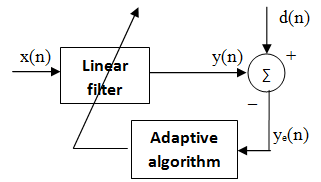Performance Analysis of LMS Filter Using Barker and Chaotic Sequences for Radar Target Detection
Keywords:
RADAR, chaotic maps, barker codes, MATLAB Simulink, LMS-RTD, Xilinx FPGA, RMSEAbstract
Target detection and tracking play a very foremost role in space and underwater scenario. In this paper, we presented a new Least Mean Square based Radar Target Detection (LMS-RTD) model is proposed to de-noising of continuous wave radar transmitted signal. In target detection, radio frequency (RF) energy is transmitted to and reflected from the reflecting object which has a status of target information. Signal generation and target detection of Radar model is designed and simulated using MATLAB 2017a Simulink. The study of performance analysis of signal generation model using binary chaos phase sequences using different chaotic maps, barker codes, combined barker code sequences and the de-noising algorithm using adaptive LMS filter is also presented in this paper. Implementation of an adaptive LMS filter using Verilog HDL and its analyses using Xilinx FPGA tool. In FPGA analysis, the number of LUT’s and used flip flops are improved in proposed LMS-RTD method than conventional methods.
References
R. L. Devaney, A first course in chaotic dynamical systems: Theory and experiment (Studies in Nonlinearity), Westview Press, 1992.
V. JaganNaveen, T. Prabakar , J. V. Suman, and P. D. Pradeep, “Noise suppression in speech signals using adaptive algorithms,” International Journal of Signal Processing, Image Processing and Pattern Recognition, vol. 3, no. 3, pp. 87-96, September 2010.
J. B. Seventline, D. E. Rani, and K. R. Rajeswari, “Ternary chaotic pulse compression sequences,” Radioengineering, vol. 19, no. 3, pp. 415-420, 2010.
K. Sridevi, J. B. Seventline, and D. E. Rani, “Four phase pulse compression sequences generated using chaotic maps,” International Journal of Computer Applications, vol. 48, no. 14, pp. 25-30, June 2012.
B. N. Mahaseth and M. S. Anuradha, “Binary and ternary sequence generation using improved logistic map,” International Journal of Advanced Research in Computer and Communication Engineering, vol. 2, no. 8, pp. 3290-3294, August 2013.
A. Ashtari, G. Thomas, H. Garces, and B. C. Flores, “Radar signal design using chaotic signals”, Proc. International Waveform Design And Diversity Conference, pp. 353-357, October 2007.
G. Heidari-Bateni and C. D. Mcgillen, “Chaotic sequences for spread spectrum: An alternative to PN-Sequences”, IEEE Conference on ICSTWC, pp. 437-440, 1992.
R. C. Hilborn, “Chaos and nonlinear dynamics: an introduction for scientists and engineers,” Canada: Oxford University Press, 1994.
T. Pitchaiah and P. V. Sridevi, “Low power area efficient high speed implementation of lms adaptive filter using distributed arithmetic”, International Journal of Emerging Trends in Electrical and Electronics, vol. 11, no. 4, pp. 69-75, 2015.
E. R. Adams and P. Losiewicz, “Detection and characterization of phase-coded radar signals,” Cranfield Univ., Research final report ADA433120, pp. 4-5, 2004.

Published
How to Cite
Issue
Section
License
Submission of a manuscript implies: that the work described has not been published before that it is not under consideration for publication elsewhere; that if and when the manuscript is accepted for publication. Authors can retain copyright of their article with no restrictions. Also, author can post the final, peer-reviewed manuscript version (postprint) to any repository or website.

Since Oct. 01, 2015, PETI will publish new articles with Creative Commons Attribution Non-Commercial License, under The Creative Commons Attribution Non-Commercial 4.0 International (CC BY-NC 4.0) License.
The Creative Commons Attribution Non-Commercial (CC-BY-NC) License permits use, distribution and reproduction in any medium, provided the original work is properly cited and is not used for commercial purposes



